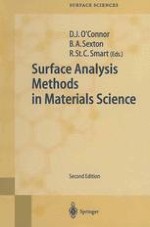The success of the first edition of this broad appeal book prompted the prepa ration of an updated and expanded second edition. The field of surface anal ysis is constantly changing as it answers the need to provide more specific and more detailed information about surface composition and structure in advanced materials science applications. The content of the second edition meets that need by including new techniques and expanded applications. Newcastle John O'Connor Clayton Brett Sexton Adelaide Roger Smart January 2003 Preface to the First Edition The idea for this book stemmed from a remark by Philip Jennings of Mur doch University in a discussion session following a regular meeting of the Australian Surface Science group. He observed that a text on surface anal ysis and applications to materials suitable for final year undergraduate and postgraduate science students was not currently available. Furthermore, the members of the Australian Surface Science group had the research experi ence and range of coverage of surface analytical techniques and applications to provide a text for this purpose. A list of techniques and applications to be included was agreed at that meeting. The intended readership of the book has been broadened since the early discussions, particularly to encompass industrial users, but there has been no significant alteration in content.
